A variety of technical attributes come to mind when you consider the strengths of a winger.
Many think of the skilful moves they produce at pace in order to beat the opposing full-back.
People often highlight the need for the winger to produce crosses that lead to clear-cut chances for their teammates.
Others will also point out the winger’s ability to cut inside and curl the ball into the far corner, giving the goalkeeper no chance.
These are all parts of the winger’s game that they need to have if they want to be successful when attacking.
However, before they even have the ball at their feet, what does a wide player need to do if they wish to execute these key elements of their game?
In this article, we will discover three essential ways that wide forwards need to receive the ball, highlighting the critical technical and tactical aspects that make these receptions as good as they possibly can be.
A training drill will also be provided to allow coaches to work with their wide players at mastering the art of receiving the ball as a winger.
Studying Europe’s big five leagues during the 2023/24 closely, there’s a clear positional advantage to being a wide forward.
When you look at those players who have received the highest numbers of progressive receptions, eight out of the top 10 play predominantly as a wide forward.
These include some of Europe’s elite wide players, such as Bakayo Saka, Lamie Yamal, and Mohamed Salah.
Not only do these players score highly in progressive receptions, yet they also have some of the highest percentile ranks for statistics that usually indicate whether a winger is successful or not.
North London rivals Bakayo Saka and Son Heung-min have a percentile rank of 92 for shot-creating actions compared with wingers in Europe’s top-five leagues.
Man City’s new signing Savio and Lille’s Edon Zhegrova have a percentile rank above 92 for successful take-ons.
It makes sense that wingers receive the more progressive passes compared with other positions due to the space that is often found in wide areas.
Yet how do these players keep receiving progressive passes and subsequently create chances from having the ball?
Receiving The Ball To Feet
So many legendary wingers of the game are known for their ability to dribble by players.
People think of Ryan Giggs’ winner against Arsenal, in which he skipped by several players before firing home a goal that played a vital role in Man United’s achieving a historic treble.
Many remember Gareth Bale’s explosive runs down the flanks for Tottenham and Real Madrid, which led to many of his most iconic goals.
Yet how does a winger consistently receive the ball so that they can dribble by their opponents time and time again?
The first step occurs before the ball is even played to the winger.
To receive the ball at their feet, a player often must make a movement as if they’re going in behind the opposition before they quickly dart back and receive the ball at their feet.
The next important component in their positioning is in relation to the opposition’s full-back.
The winger must ensure he receives the ball at his feet in a diagonal position from the opposition’s full-back.
Receiving the ball horizontally in line with the opposition’s full-back cuts off the ability to cut inside, making it easier for the defenders to show you down the line.
Receiving the ball diagonally gives an opportunity to cut inside or to run down the line.
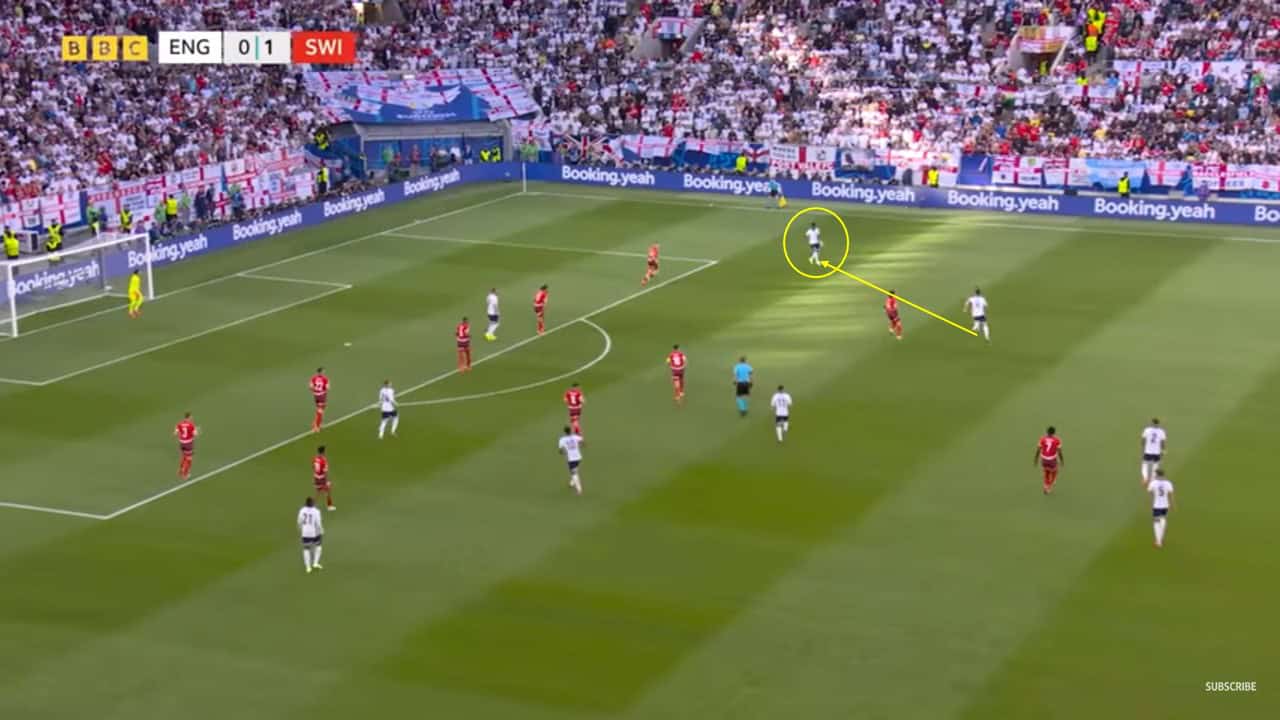
Here, Bakayo Saka quickly gets into a position where he is diagonal from his direct opponent.
After receiving the ball, he is able to run directly at his opponent before cutting inside and scoring a goal.
The third key element is receiving the ball on your back foot.
This position offers similar benefits to the diagonal position, as it gives the winger the option to dribble inside or outside.
If a player takes his first touch with his front foot, it makes it far too predictable for the defender that he’s going to cut inside.
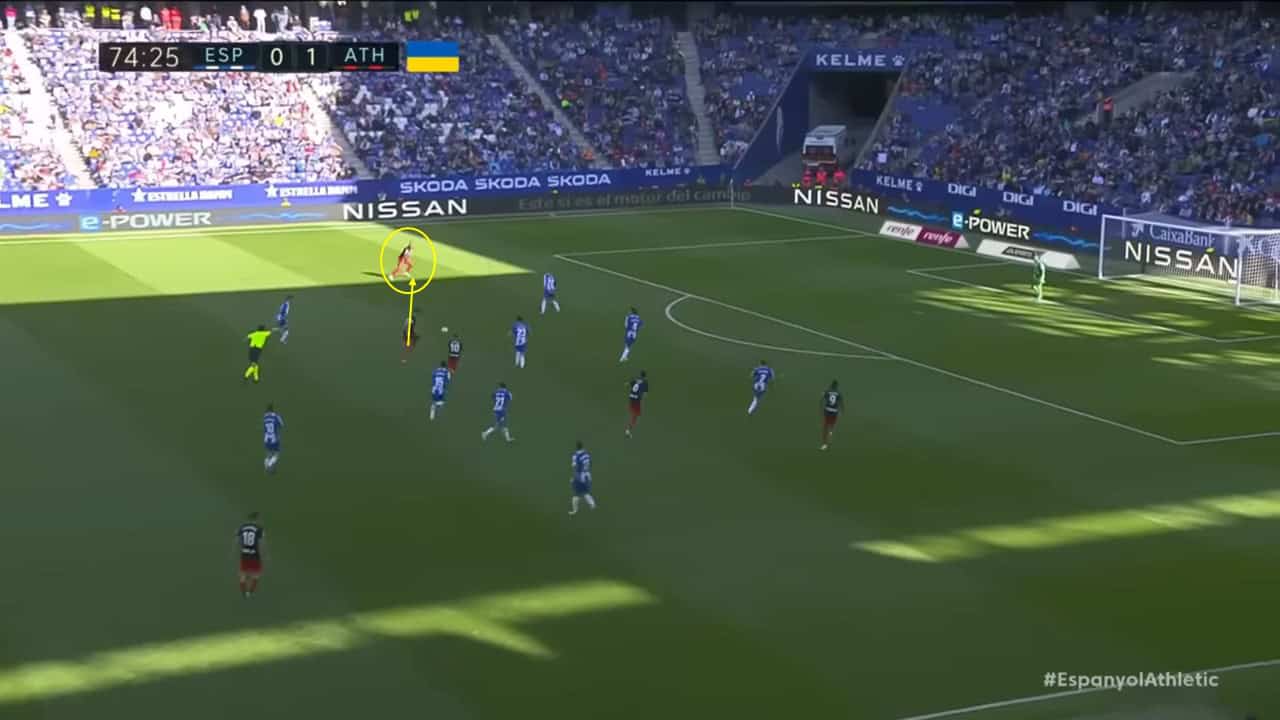
Williams has taken up the correct position in this situation, standing diagonally from his opponent.
As the ball is passed to him, he lets it come onto his back foot.
Despite him having the intention to cut inside, taking the ball on the back foot prevents the opposition’s full-back from cutting off the space inside early as his first touch allows Williams to go either way, placing doubt in the mind of his opponent.
Receiving In Behind The Opposition
There’s one physical attribute that is almost unanimous with wingers: speed.
That’s why many of the progressive passes to wingers will come from balls that are played in behind the opposition’s backline.
Yet how do players use their pace and beat defences that can be almost impossible to break down with penetrating forward runs.
The first essential step is inviting the full-back out of position.
Using a double movement can be just as effective when receiving the ball in behind an opponent as it is when receiving the ball at your feet.
The winger must again start diagonally and creep towards the player in possession, looking as if they are certain to receive the ball to their feet.
This will invite the opposition full-back to try and gain an advantage by going towards the winger before the ball is played, leaving acres of space in behind.
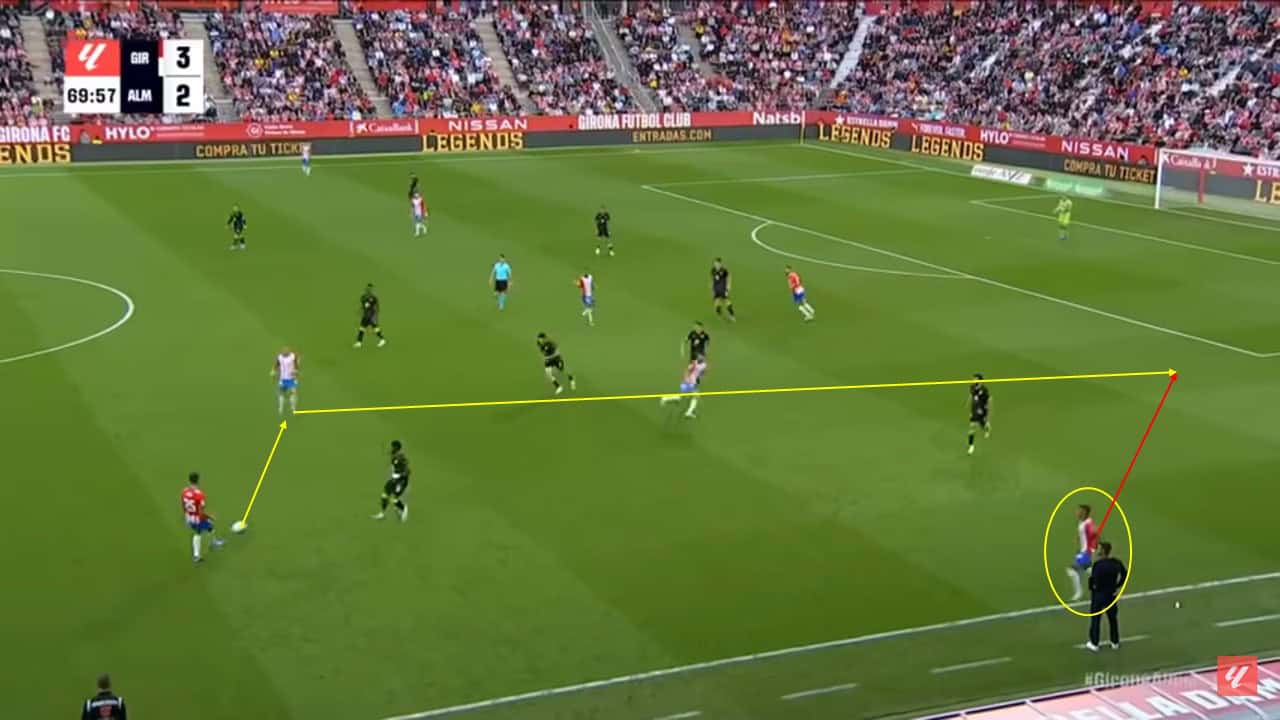
Here, Savio makes one run to come and collect the ball to his feet.
This has led to the opposition’s full-back stepping out of position in order to press the Brazilian winger intensely if the ball is played to his feet.
This leads to a significant amount of space left behind, which Savio exploits by getting in behind the opposition’s defence.
The role of the winger is to be aware of his direct opponent’s positioning.
If the opposition’s full-back steps out of the vertical line with the player on the ball, this often triggers a run in behind, with huge space left between the defensive unit for a through ball to be played.
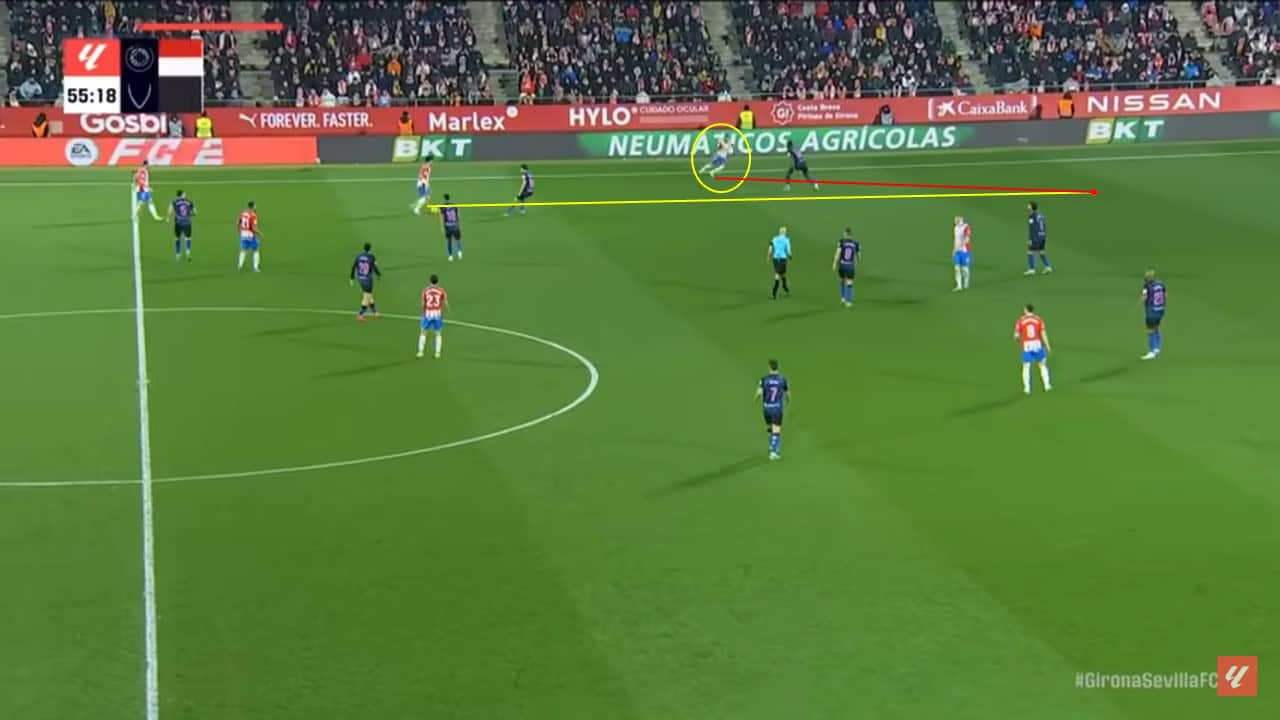
Again, Savio has dropped deep as if to receive the ball.
The opposition’s full-back has gone far too early, leaving a massive gap between him and the right centre-back.
Savio then quickly explodes into the space behind the full-back, where he’s able to get on the end of the through ball and cross first time, setting up a goal for his team.
A key part of making a run in behind is staying onside.
The ultimate trigger for any player knowing when their teammate is about to play the ball is when the player on the ball puts their head down.
At this point, the wide forward can quickly run behind the opposition’s backline.
Curving your run is another key tactic to deploy, particularly when making a run that will lead to the ball being received centrally.
Curving your run allows you to stay in line with the last man and gain the needed momentum before finally breaking free to receive the ball.
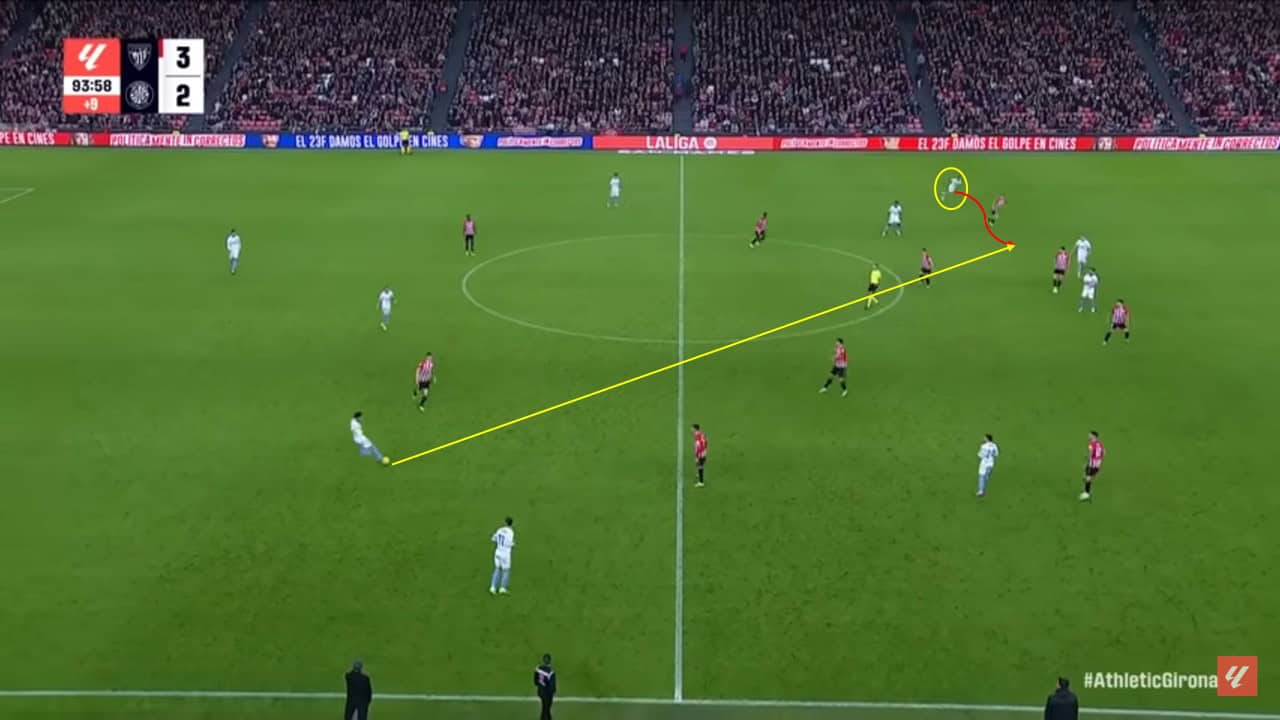
Here, Williams sees the potential for a long diagonal ball to be played in his direction over the defence.
He runs across the opposition’s defensive line before darting in behind to receive the ball.
Coming Inside
Wingers often do stay as close to the touchline for good reason.
It allows them to get on the ball while leaving space for the opposition’s central midfielders to make runs in the half-space.
In the modern era of inverted wing-backs, it is also necessary to ensure width is provided in the team.
However, teams still opt for their natural width to come from their full-backs and can sometimes play with two holding midfielders, limiting the use of the half-spaces by central players.
This leaves it to the wingers to come inside and cause havoc.
There are a couple of different ways that wingers can come inside.
The first is operating in the half-space, as a number 8 might do.
If a full-back has taken up an advanced wide position, it may allow them to make an underlapping or parallel run to get in behind the opposition.
Starting inside during the build up play and then making a clever out to in run as the ball is played to the wide full-back, allowing the winger to get into some deadly positions.
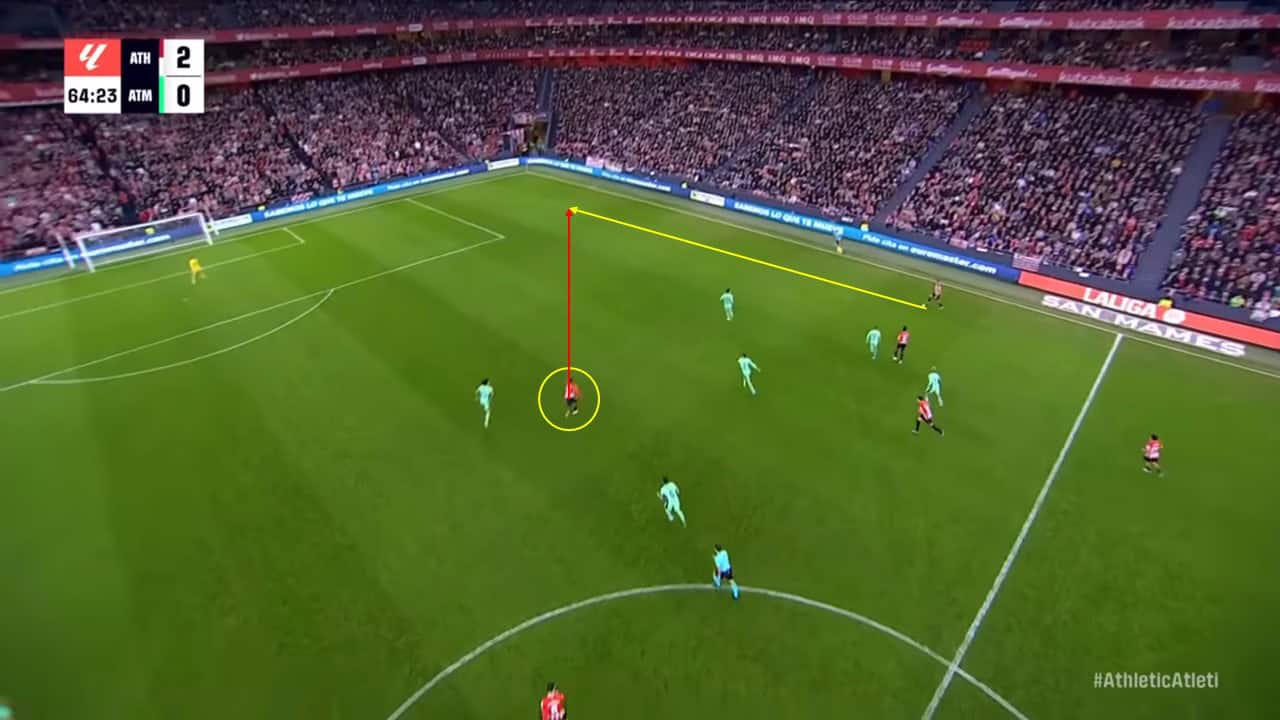
Here, Niko Williams has come inside.
As the ball moves out to his team’s full-back, he makes an out to in run, allowing him to receive the ball in the penalty area, where he eventually works some room to score an outstanding goal.
During a team’s build-up play, a winger may be able to receive the ball in the half-space.
This causes confusion in the defending team.
Standing between the opposition’s full-back and centre-back creates a dilemma for both players.
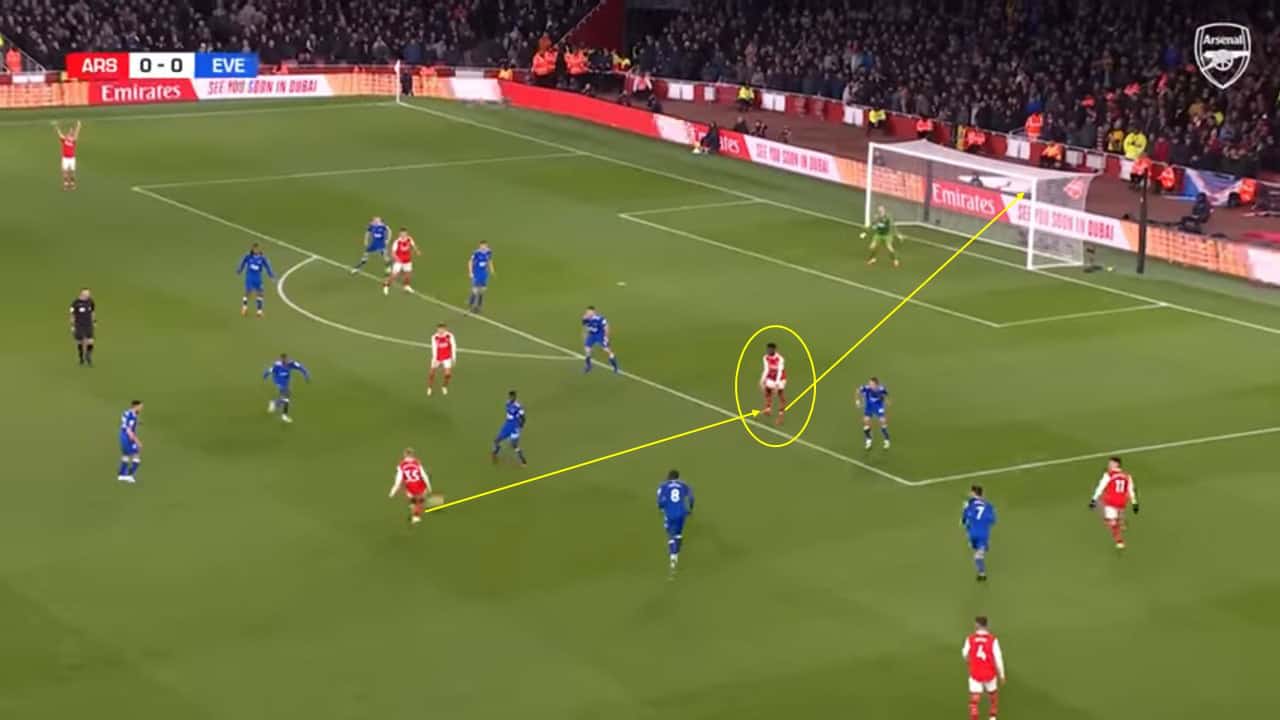
Saka has done exactly that by standing in between the opposition’s left-back and left centre-back.
Who should be marking him?
This allows a firm pass to be played into his feet.
He then takes the ball on his back foot and strikes it cleanly with his second touch, sending it past the goalkeeper.
Despite certain formations allowing wingers to get into these types of positions during their team’s efforts to progress the ball, they can also utilise the positions of their central teammates to receive the ball in promising areas inside.
As the ball is played forward to a midfielder or striker, a winger can come inside and make a third-man run.
This allows them to receive the ball unchallenged and with momentum as they break inside.
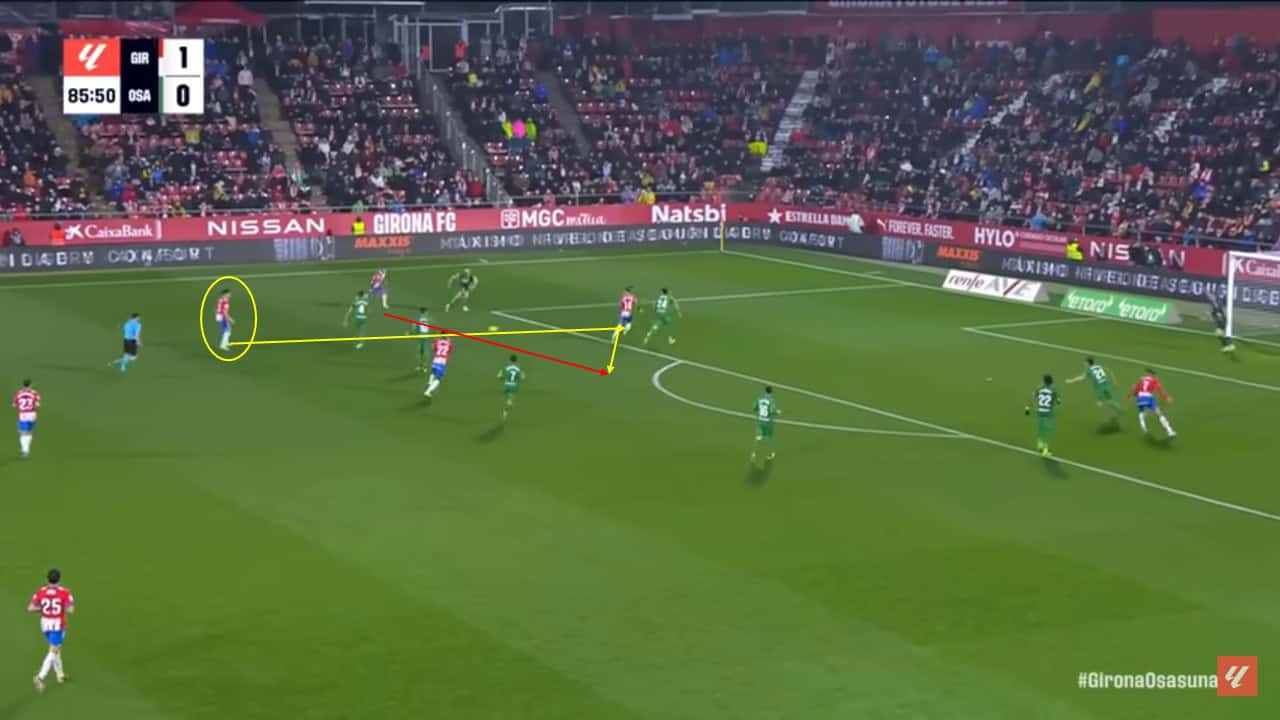
Here, Savio is out on the wing.
The ball is played forward into the feet of one of his side’s advanced midfielders.
He makes a darting run inside, receiving a layoff from the advanced midfielder, allowing Savio to drive inside and eventually get a shot off goal.
Training Drill
Now that we have learned the key ways for a winger to receive the ball, here’s a training drill for coaches to do with their wingers.
The drill requires a goal, two to six cones, and at least three balls, but ideally, 12 to 20 to get more repetitions.
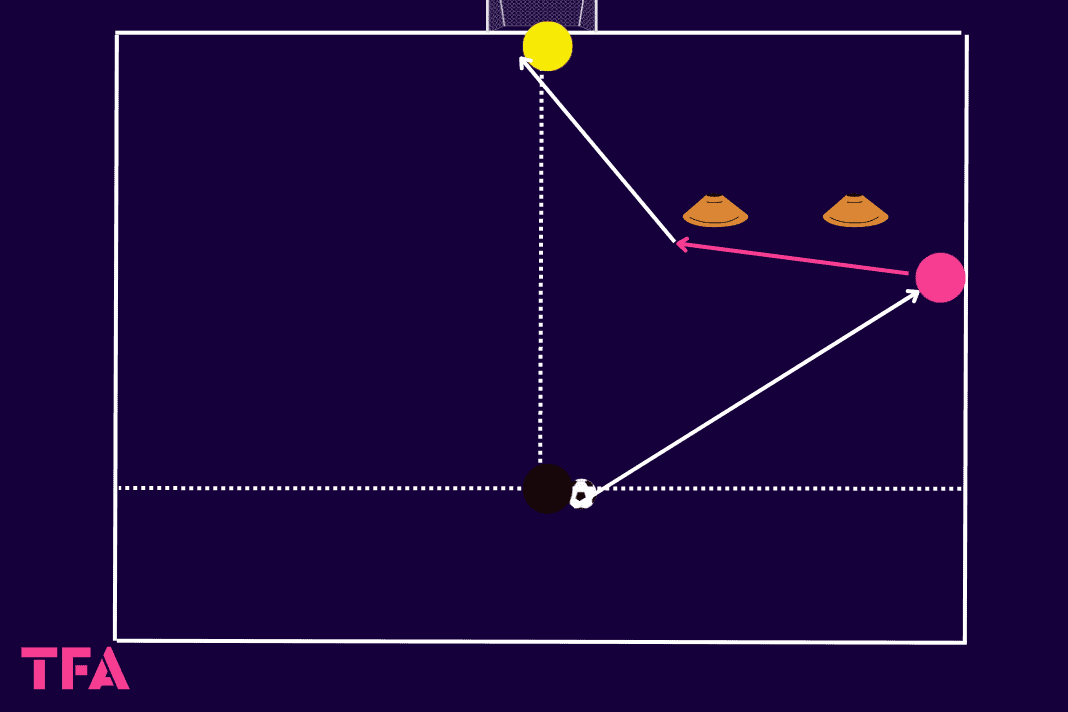
The drill works in three phases.
The first will be working on the wide forward, receiving the ball to feet.
The player begins the drill by asking the coach to pass the ball into their feet.
The player receives the ball and runs at the cones, performing a skill move to cut in or go down the line.
They must then have a shot on goal or cross the ball into a mini-goal or an area marked out of cones in the box.
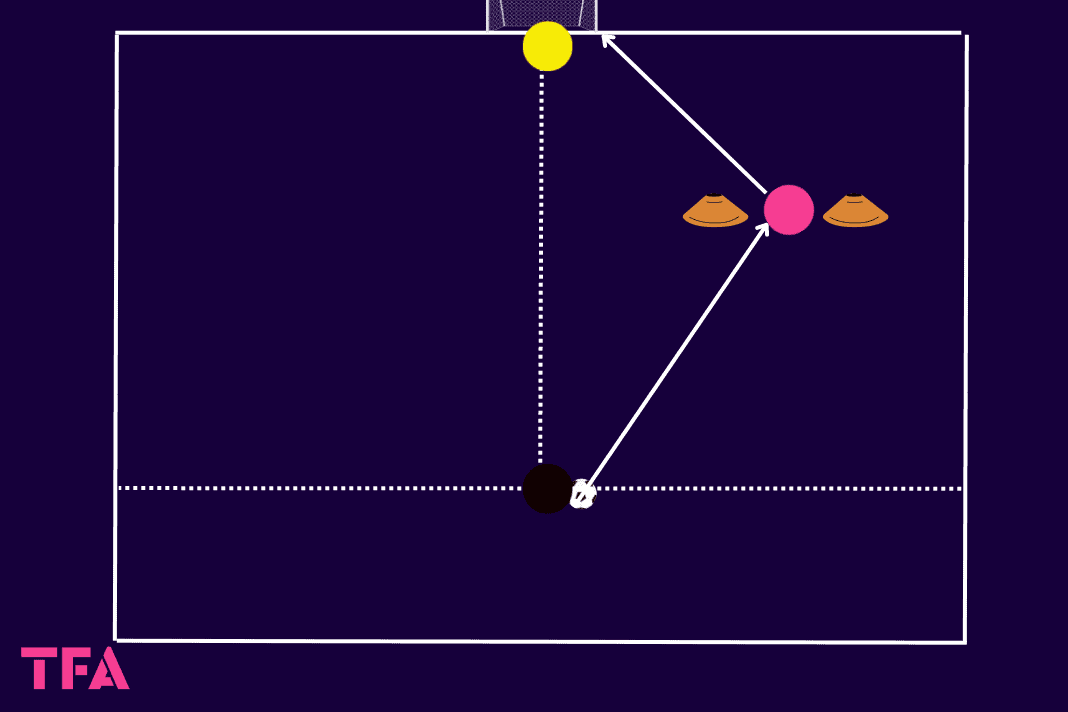
The second phase will see the player jogging back to pretend to receive the ball to feet before the coach eventually plays a pass through the two cones for the player to cross the ball, ideally first time.
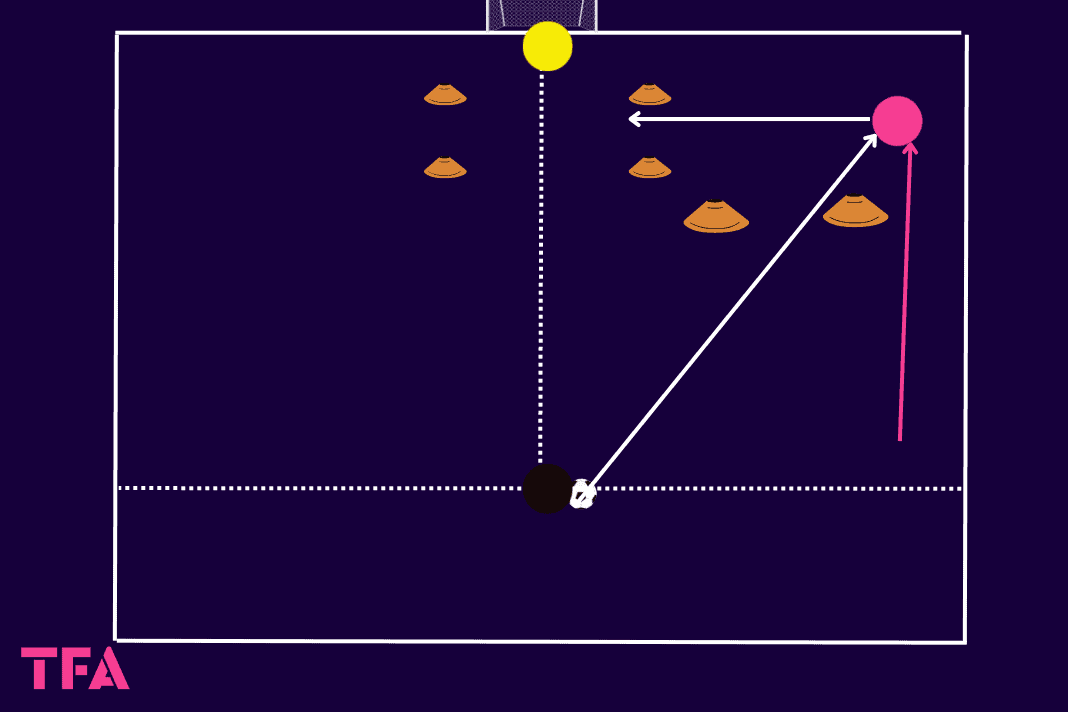
The third phase will see the player jog back and take up a position in between the two cones.
The coach will fire the ball into their feet.
They then have two touches before they have to shoot across the keeper.
The coaching points that have to be emphasised are found throughout this article.
Analyse your player’s performance and see what elements of movements, run timing, positioning, and foot of reception they may need special attention on.
Think creatively about how you could change up this drill.
Changing the type of finish/cross or adding in another player/coach who could act as a full-back or central midfielder when practising an underlap or third man run will help to freshen things up and allow you to use this practice over several weeks.
Be sure to practise this drill on both sides to help the player develop versatility.
Conclusion
In conclusion, we’ve seen that the wide player can be one of the most dangerous players in a team.
However, for them to be utilised, they must have several ways to effectively receive the ball.
A variety of small details go into a player receiving the ball in a manner that gets them into a dangerous position and maximises their ability to be as dangerous as possible.

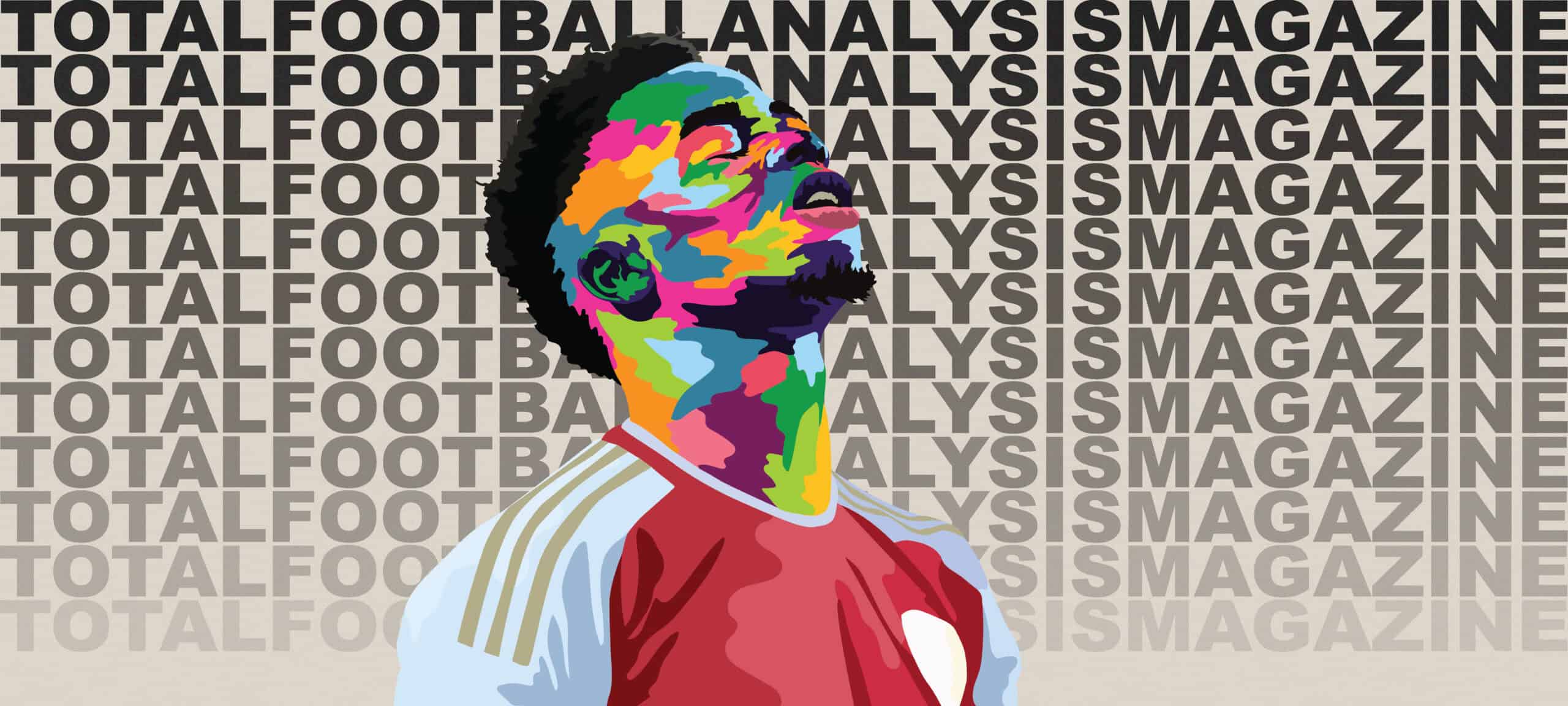



Comments